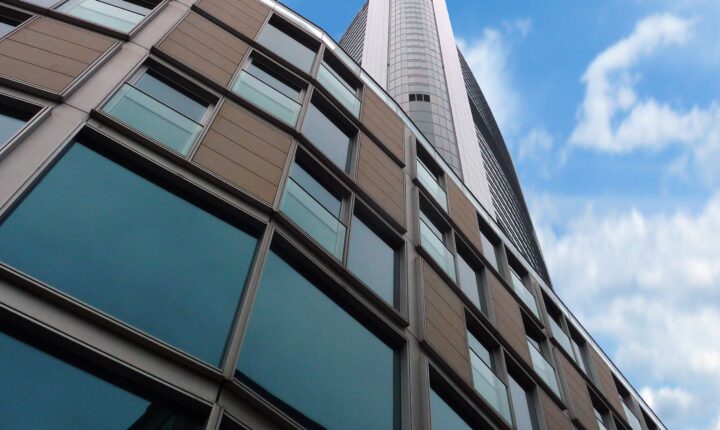Just the PeaksThis newsletter at a glance
|
Are residential and commercial properties both calling your name?
Strike the perfect balance with an investment in mixed-use development.

What’s your next real estate investment goal?
Maybe you have a few single families under your belt, but haven’t really thought about crossing over into the commercial scene. Or if you’re just starting to grow your portfolio, you may think that commercial buildings are too difficult to manage for a newbie.
No matter your stance, Everest is here to make the case for mixed-use development.
“These projects combine elements of residential, commercial, and sometimes industrial spaces all into one property,” says David Glauber, Loan Officer at Everest Equity. “The blending of property types comes with added responsibility, but it also gives you greater opportunity for investment success.”

In fact, mixed-use developments boast a wide range of benefits from an investment standpoint. This month, we’re mixing things up with a breakdown of everything you need to know about these fascinating multi-use entities. Ready to make your move? Get in touch today!
Call it a winning combo

By definition, mixed-use development is anything that incorporates two or more land uses. These properties are commonly found in cities, but in recent years, they’re also cropping up in suburban and even rural locations.
As demographics and real estate needs have evolved over the last century, the demand for compact communities has grown—and developers have responded. Thus, we see residential housing mixed with retail stores, restaurants, coffee shops, entertainment venues, gyms, offices, everyday services, and more.
Historically speaking, mixed-use development intended to improve the following:
-
Housing affordability. Oftentimes, the rent from the larger commercial tenants helps offset the rents of smaller residential tenants.

-
Walkability. Mixed-use tenants enjoy close proximity to public transportation, workplaces, shopping, and other neighborhood amenities.

-
Local culture. Close-knit communal living encourages residents to form meaningful bonds while supporting their local economy.

Today, the “mixed-use” category comprises a diversity of development types.
In major urban cities, you typically see vertical mixed-use properties (first floor retail space with apartments on the upper floors). Out in the suburbs, you’ll also notice a growing number of horizontal mixed-use developments (single-use buildings within a larger complex).
Finally, experts say millennial homebuyers are driving the demand for multi-use communities.
“Everyone craves that feeling of belonging,” says Glauber. “Mixed-use developments appeal to younger demographics because they’re pedestrian-friendly and all-around convenient. But people of all ages enjoy the lifestyle for its stronger sense of community.”
The popularity of mixed-use developments will continue to flourish into 2024. Investors venturing into this asset class can do so confidently with the following in mind.
5 Key Benefits of Mixed-Use Investment

-
Built-in clientele. Retailers, restaurants, convenience stores, and other commercial tenants always have a steady stream of customers since they are living on premises. Property owners benefit from both sides, making the arrangement a win-win.
-
Lesser risk. Having both residential and commercial tenants diversifies the investment and helps alleviate risk in ways a single-use property cannot. For instance, if a commercial space happens to be vacant, residential tenants keep your income flowing.
-
Greater exposure. There’s no need to market your property when people are walking by! The foot traffic generated by the property’s commercial businesses helps create buzz and attract new residential tenants as necessary.
-
Better management. Because of the complicated nature of running a mixed-use building or complex, most owners bring in a property manager specializing in this asset type. They will ensure shorter vacancies, high-quality tenants, and overall smoother operations.
-
Desirable amenities. Aside from affordability, more and more Americans want to live in communities where they don’t need a car. Access to transportation and walkable amenities have helped boost the popularity of mixed-use development in recent years.
Are there any downsides to mixed-use development?

Like any investment, risk is always involved. Therefore, it’s good to familiarize yourself with the reasons why mixed-use ventures have failed in the past. Understand these mistakes so you may avoid making them in the future.
-
Financing challenges. “I’ll be honest, certain mortgage products are not eligible for mixed-use properties, but there are plenty of good solutions out there,” notes Glauber. “It’s best to shop or plan for a building with greater square footage on the residential side, as this can help the property qualify for more financing options. Still, there are so many details to funding a mixed-use project.” That’s why it’s important to work with a veteran team of mortgage professionals like Everest!
-
Bad locations. The most successful mixed-use properties are positioned in areas that can accommodate the rush of new foot traffic. A building may be perfect for your tenants’ needs, but if the surroundings are too busy or unwalkable, it’s best to find another.
-
Zoning restrictions. When looking into mixed-use development, you have to perform a lot of research, apply for special permits, and deal with potential regulatory restrictions (environmental, etc.). Consult with local officials, real estate experts, and mortgage professionals as early in the process as possible.
Some awe-inspiring examples

The beauty of mixed-use development is that it comes in all shapes and sizes. Investors can expand their portfolio in both modest—and mammoth—ways! Explore what’s right for you and ask your trusted Everest loan officer about the kinds of loan products out there.
For now, get inspired with these three breathtaking examples of mixed-use development from one of our favorite locales: New York City.
217 West 57th Street, Midtown West
Year Built: 2021
Residential Apartments: 179
Commercial Tenant: Nordstrom’s Flagship
500 West 33rd Street, Midtown West
Year Built: 2020
Residential Apartments: 143
Commercial Tenant: Equinox Hotel
Between 5th and 6th Avenues, Midtown West
Year Built: 2020
Residential Apartments: 145
Commercial Tenant: Museum of Modern Art
Everest says: the skyscraper’s the limit
RECENTLY FINANCED
Office Construction
$14,812,500
Closed the deal with confidence and ease.




